| Title | Image | Summary of text |
|---|---|---|
| dePas - First Part - Page 50 |  | The text at the top of the page translates to 'The Art of Design.' It appears to be part of a book discussing artistic techniques related to capturing human anatomy, specifically the lower limbs. |
| dePas - First Part - Page 51 | 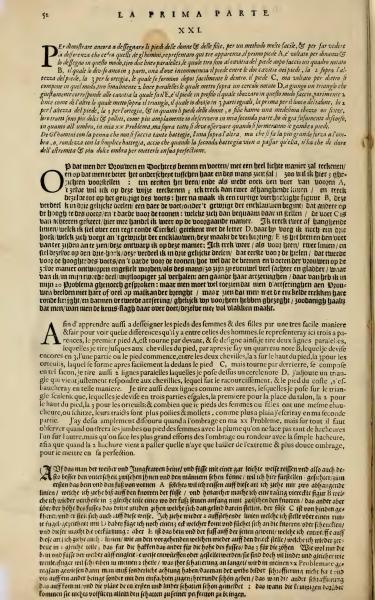 | The text instructs on how to draw women's and men's feet, highlighting differences with easy steps. It describes dividing the feet into parts for accurate depiction, focusing on drawing techniques related to curves and shadows. Special attention is given to illustrating feet with gentle lines and forming shadows effectively. |
| dePas - First Part - Page 52 |  | The page is titled 'On the Art of Drawing' and includes several letters and numbers likely used to reference parts of the illustrations. It appears to be a guide on drawing proportions and structures of human legs, with reference to specific sketches seen on this page. |
| dePas - First Part - Page 53 |  | The text provides a detailed method for drawing the human arm, emphasizing its necessity and utility. It instructs on dividing the arm into four parts for accurate representation, offering guidance on muscle formation and detailing changes by contrasting two illustrative arms. The importance of careful sketching and shading, previously discussed in relation to legs and feet, is reiterated. |
| dePas - First Part - Page 54 |  | The text titled "THE ART OF DRAWING" contains labels and numbered sections likely intended for instructional drawing purposes. It appears to be part of an educational resource for learning how to accurately draw human anatomy, accompanied by detailed sketches and measurements. The diagrams focus on the structure and proportions of the arm. |
| dePas - First Part - Page 55 | 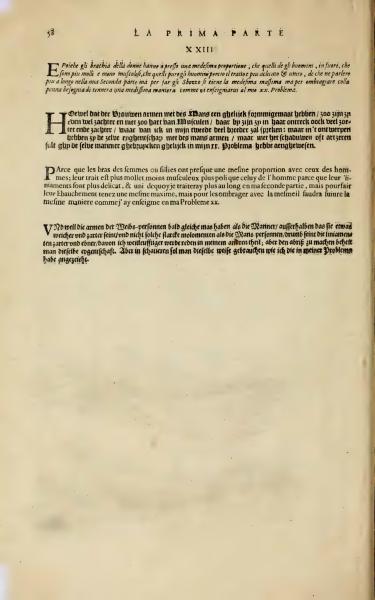 | The text discusses the proportional similarities between the arms of women and men, noting that women's arms are softer and less muscular. It suggests using a gentler shading technique for women's arms, consistent with the instructions given in a previous problem. The text promises further exploration of these ideas in a subsequent section. |
| dePas - First Part - Page 56 |  | The page is titled 'From the Art of Designing' and marked with the numeral twenty-three. It contains illustrations of arms for artistic study and practice. |
| dePas - First Part - Page 57 | 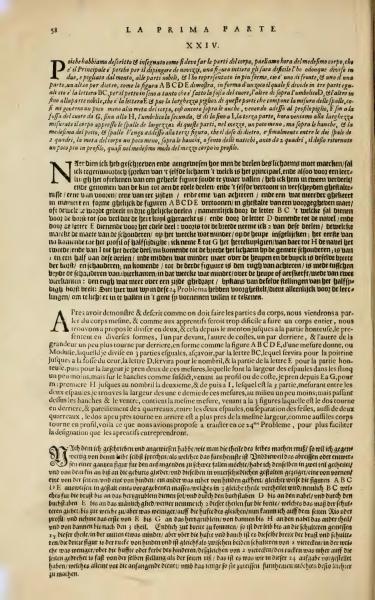 | The text details how to break down and depict the human body for aspiring artists by dividing it into three main parts: chest, navel, and lower body. It provides instructions on measuring and drawing different body parts such as the shoulders, hips, and profile views. These divisions help artists simplify the process of rendering the body, with guides to reflect different figures and facilitate learning. |
| dePas - First Part - Page 58 |  | The text at the top of the page translates as "Of the Art of Drawing." It appears to be a reference or title to what the instructional images below are about. The number at the bottom is '24,' likely indicating a page or section number. |
| dePas - First Part - Page 59 |  | The passage details the process of sketching and shading important anatomical features, paying attention to muscles and structure before moving on to detailed shadow work. It emphasizes the gentle application of drawing mediums to preserve initial outlines and create realistic depth. The text offers insight into a 17th-century technique for depicting the human form with precision and artful shading. |
| dePas - First Part - Page 60 |  | The image text, in Italian, translates to "Of the Art of Drawing." The number "XXV" likely refers to a page or plate number, implying a series of anatomical drawings. |
| dePas - First Part - Page 61 |  | The text explains how to construct drawings of the human body, first from the front, then from the back. It provides instructions using labeled sections: shoulders, ribs, thighs, and hips, to make it easier for students to understand anatomy. The same proportions and methods apply to both the front and back, with notes on how limbs like the arm should appear slightly bent inward. |
| dePas - First Part - Page 62 |  | The text is a heading from an art book about drawing, titled "Of the Art of Drawing." It includes letters and a Roman numeral representing a figure or section. The page seems to be part of a structured sequence in an art manual. |
| dePas - First Part - Page 63 |  | The text discusses human anatomy, focusing on proportions in drawing. It provides a practical guide for depicting the body, suggesting the use of simple tools to measure dimensions effectively. |
| dePas - First Part - Page 64 |  | This page features two anatomical drawings with construction lines and labels, teaching proportions in art. It corresponds to the book "The First Part of the Light of Painting and Drawing, in the Oval," by Crispijn de Pas from 1670. |
| dePas - First Part - Page 65 |  | The text describes the subtle differences between male and female bodies, emphasizing the adjustments needed when drawing different parts from youth to adulthood. It advises on techniques for drawing such as using charcoal and precise lines, detailing the process to ensure shadows and lights are accurately depicted. The importance of maintaining delicate textures and ensuring they fade smoothly into light is also emphasized. |
| dePas - First Part - Page 66 |  | The image contains the Roman numeral XXVII, indicating a page or section number in the book. |
| dePas - First Part - Page 67 |  | SummaryThe page discusses the proportions of children's bodies, both male and female, in different languages. It outlines a method to articulate the limbs of children who have not yet reached full stature by dividing the body into measured sections from head to toe, using guidelines based on anatomical landmarks. The approach focuses on balancing form and length and provides structured ways to align their proportions based on historical measurements and visual references. |
| dePas - First Part - Page 68 |  | The text, titled "On the Art of Drawing," introduces the concept of drawing techniques related to human anatomy. This title connects to the images on the page, which provide visual instruction in drawing proportions and forms. The images illustrate both basic and advanced concepts in figure drawing. |
| dePas - First Part - Page 69 | 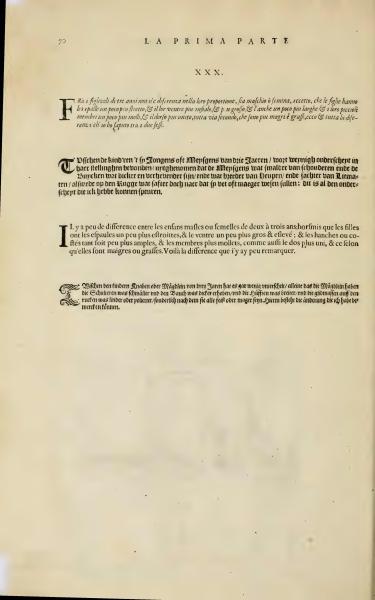 | The text discusses the physical differences between young boys and girls around the age of three. It points out that girls tend to have narrower shoulders, larger and more elevated bellies, and broader hips compared to boys. These observations are consistent across different languages in the text and note the slight variations based on whether the children are lean or plump. |
| dePas - First Part - Page 70 |  | The text "DEL ARTE DEL DISEGNARE" translates to "On the Art of Drawing." This is the title of the page, indicating the subject covered in this section of the book. |
| dePas - First Part - Page 71 |  | The text discusses methods for teaching the proportions of the human body in art, using the concept of five columns as a foundational guide. It details the practices of the Roman Painters' Academy in clothing figures, understanding perspective, and studying the movement of figures. The information is presented in multiple languages, highlighting historical teaching methodologies in art. |
| dePas - First Part - Page 72 |  | The text discusses the proper techniques taught at the Roman Academy and Drawing Schools. It emphasizes the elegance required in posing models, the use of lamplight, and the application of shadows to accurately represent figures on paper. The principles are explained in Italian, Dutch, French, and German, highlighting the universal importance of these techniques in art training. |
| dePas - First Part - Page 73 |  | |
| dePas - First Part - Page 74 |  | |
| dePas - First Part - Page 75 |  | |
| dePas - First Part - Page 76 |  | |
| dePas - First Part - Page 77 |  | The text discusses the revival and evolution of drawing techniques, emphasizing clarity and uniformity. Giovanni Amatori critiques past practices that neglected proportions and highlights the importance of classical study. The work encourages a balance between learned technique and observation of natural life to achieve beauty and harmony in art. |
| dePas - First Part - Page 78 |  | The document discusses the restoration and teaching of painting and drawing, highlighting the importance of academic practices revived by respected figures like Cimabue and Raphael after a period of decline due to invasions. It emphasizes the role of careful preparation, lighting, and proportion in the art of drawing. The text also underscores the significance of understanding figure modeling and provides guidance on maintaining elegance and strength in artistic depictions. |
| dePas - First Part - Page 79 |  | The text discusses the tradition of drawing and painting art as practiced by the ancient Greeks and Romans, noting its decline and eventual revival by Italian scholars. It compares this revival to the rekindling of the Latin language through enthusiastic educational efforts. This serves as an introduction to a work focused on drawing from life and nature. |
| dePas - First Part - Page 80 |  | The text discusses the history and techniques of drawing and painting, emphasizing the importance of practice and understanding proportions in art. It highlights famous artists like Michelangelo and Raphael as paragons of the craft. The text also stresses the significance of structured education in mastering drawing skills, achieving realistic representations, and encouraging collaborative learning. |
| dePas - First Part - Page 81 |  | The text discusses the historical decline and revival of painting and drawing, with a focus on the Italian contribution through the use of lamplight for shading. It highlights the precision required in drawing, emphasizing proportion, and the importance of systematic training in an academy setting. The text gives advice on setting up a suitable studio and choosing a well-proportioned model for drawing practice. |
| dePas - First Part - Page 82 |  | The text teaches artistic drawing of figures with correct proportions, using a simple method based on lines or modules. It includes instructions on how to dress these figures using various fabrics and shading techniques modeled after Roman styles. Different styles for drawing men, women, and children are discussed, focusing on their realistic depiction in various poses. |
| dePas - First Part - Page 83 |  | The text describes the similarity between human measurements and columns. It discusses using a "module" as a unit to measure parts of the human body, such as dividing the body into seven parts from head to feet. This method allows for understanding proportions and is applicable to both art and construction. |
| dePas - First Part - Page 84 |  | The text at the top of the page translates as "The Art of Drawing." The content suggests that this page is part of an educational resource focused on teaching the accurate depiction of human figures in art. It emphasizes learning the correct proportions and measurements needed for drawing. |
| dePas - First Part - Page 85 |  | The text describes detailed technical instructions for sketching the human form using specific dimensions and proportions. Various languages provide a universal approach to visualizing the human figure, focusing on geometry and proportional methods. The document intends to teach precision in artistic representation, ensuring realistic depictions of human anatomy. |
| dePas - First Part - Page 86 |  | The image features two anatomical drawings labeled for instructional purposes related to the art of drawing. It includes stylized letters and measurements to guide the representation of human proportions. This aligns with the book's educational intent on teaching drawing by understanding anatomy. |
| dePas - First Part - Page 87 |  | The text discusses the proportional similarities between a man with eight heads and the Doric column, suggesting that this proportion is better suited for certain descriptions. It compares this method with the Tuscan style, emphasizing the nobility and propriety of the Doric style for such artistic descriptions. The text uses the concept of 'heads' as a unit of measurement in art. |
| dePas - First Part - Page 88 |  | The text includes the title "The Art of Drawing" and a list of labeled points (A to S) on an anatomical drawing. The labels are likely used as reference points for anatomical proportions in drawing. |
| dePas - First Part - Page 89 |  | The text presents instructions for drawing the human figure using classical proportions. It discusses depicting a person from both the front and back, involving drawing perpendicular lines for accuracy. This text includes translations in Dutch and French, emphasizing the eight-heads technique for human proportions. |
| dePas - First Part - Page 90 |  | The page is a guide on drawing with labeled parts for teaching anatomy and proportions. The annotations correspond to different sections of the human body to assist artists in learning correct proportions. It reflects 17th-century art instruction methods. |
| dePas - First Part - Page 91 | 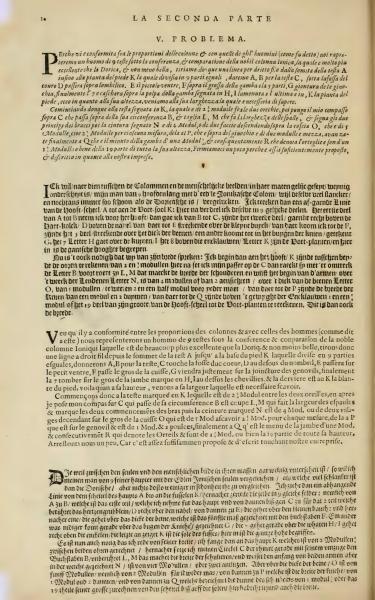 | The provided text draws a comparison between human proportions and those of Ionic columns, stating both are equally beautiful and dignified. It offers a method to depict a man's posture, using a vertical line split into nine sections to guide the proportional measurements. The instructions include details on aligning body parts with calculated measurements to achieve symmetry and balance, reflecting accuracy and attention in stature, similar in elegance to classic Ionic columns. |
| dePas - First Part - Page 92 |  | The image includes labels in Italian referring to drawing modules with various fractions, focusing on the study of artistic proportions. It serves as an educational tool for understanding human anatomy and proportion in art. This aligns with the book’s purpose of providing drawing instructions related to the human body. |
| dePas - First Part - Page 93 | 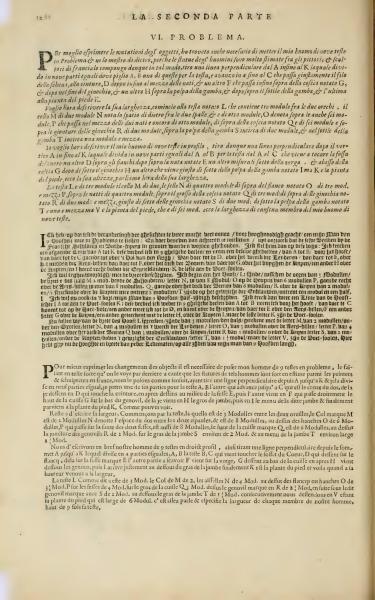 | The text discusses the method of representing a human figure with nine heads, a concept used to describe proportions in art. It outlines the process of scaling the human body using a perpendicular line divided into nine equal parts, covering both width and height measurements. The instructions guide how to proportionally adjust body parts such as the head, neck, shoulders, hips, knees, and feet, ensuring accurate artistic representation. |
| dePas - First Part - Page 94 |  | This image is from an art book focused on human anatomy for drawing. It includes labeled modules indicating proportions of the human body, aiding in accurate artistic representation. The image is part of instructional content for artists, highlighting body structures. |
| dePas - First Part - Page 95 | 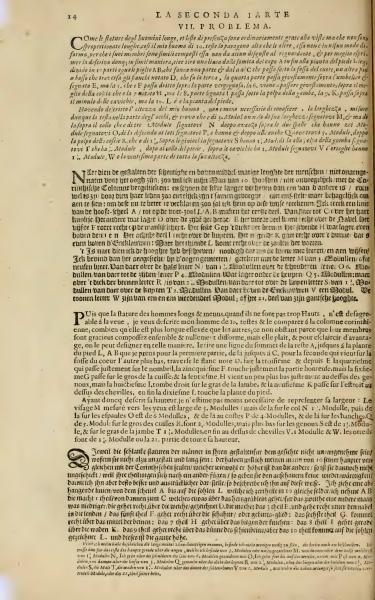 | The text discusses the artistic representation of statues, focusing on proportions and composition. It explains how to divide the human form into segments using a system called 'Module' to achieve visual harmony. The passage emphasizes the importance of understanding dimensions when depicting human figures. |
| dePas - First Part - Page 96 |  | The image features a detailed drawing titled 'On the Art of Drawing,' displaying a male figure annotated with modules for study. The figure serves as an artistic reference for understanding human anatomy. These notes appear designed to guide artists in accurately drawing human proportions and muscle structures. |
| dePas - First Part - Page 97 |  | |
| dePas - First Part - Page 98 |  | |
| dePas - First Part - Page 99 |  | The only discernible text is the number "10" in the image, which appears to be a page number. |
COPYRIGHT © 2024 STUDY DRAWING. ALL RIGHTS RESERVED.